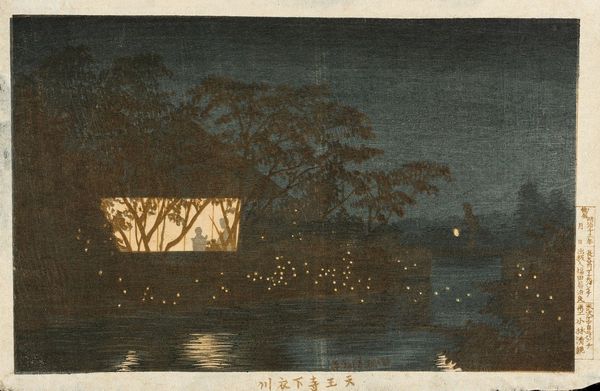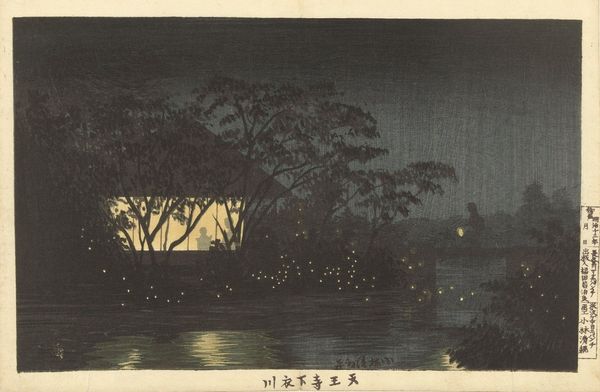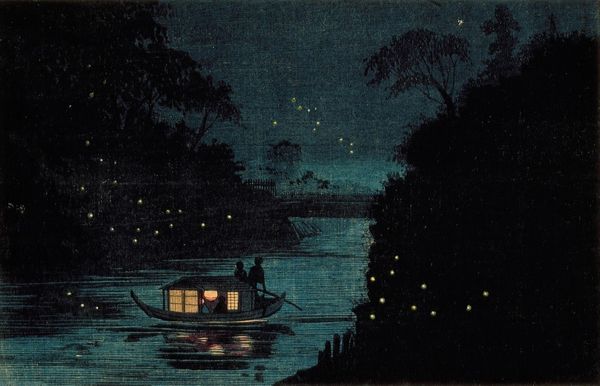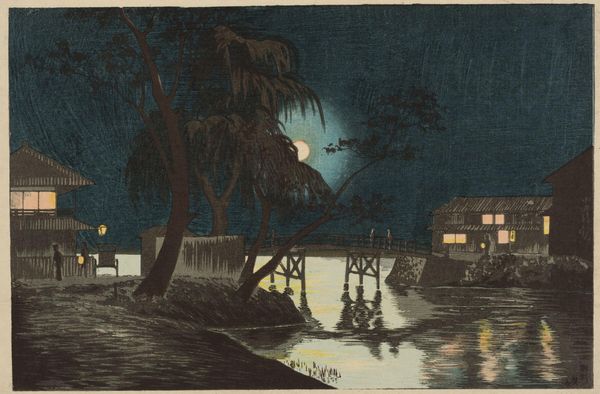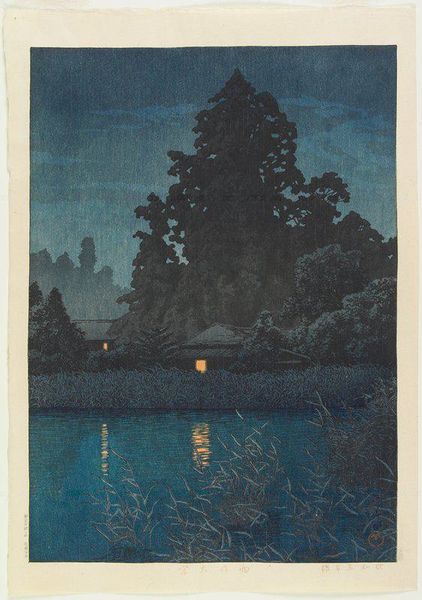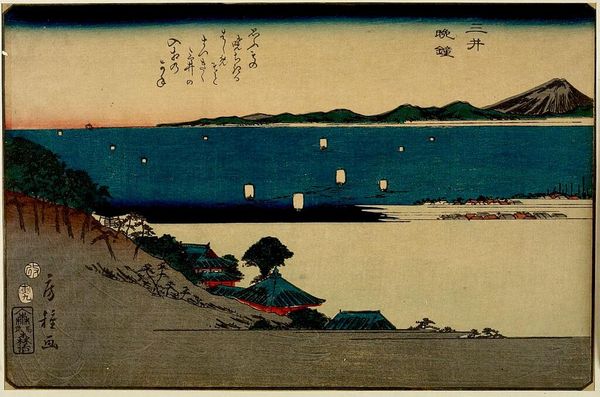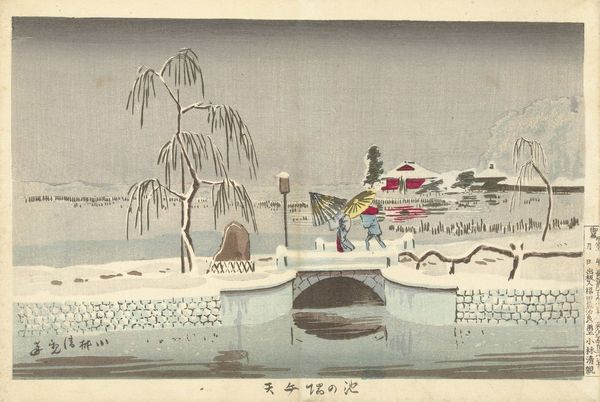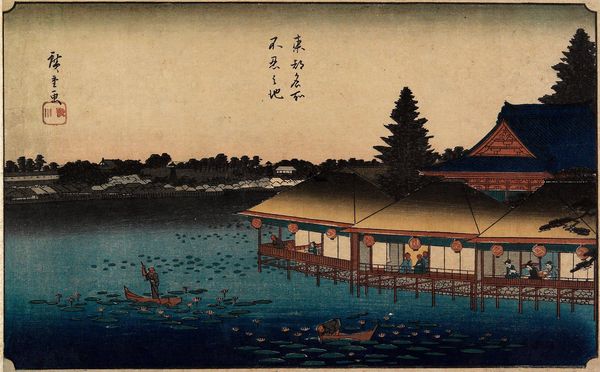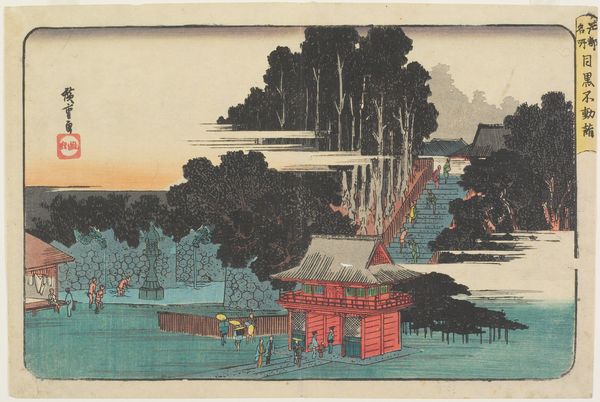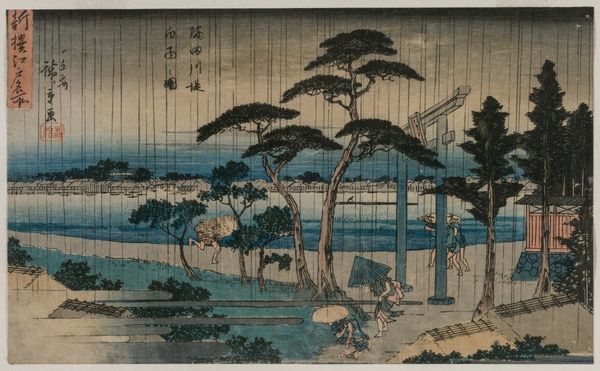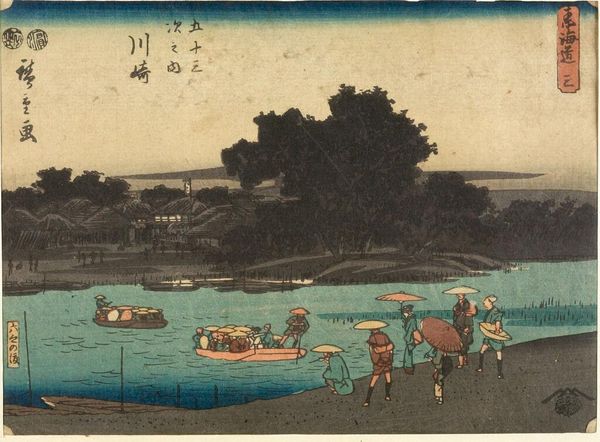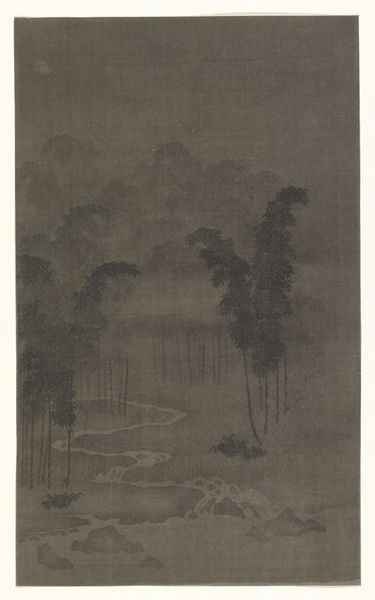
Copyright: Public Domain: Artvee
Editor: Here we have "The Koromo River Below the Temple Tennōji," a woodblock print made around 1880 by Kobayashi Kiyochika. It's incredibly atmospheric, with all these glowing dots suggesting lights in the darkness. What's your perspective on this work? Curator: From a materialist perspective, let's consider the implications of Kiyochika's chosen medium. He’s not simply creating an image; he’s engaging with the woodblock print, a process that involves labor, specific materials—wood, ink, paper—and a system of production aimed at wide consumption. Editor: So, the choice of the woodblock print is key? Curator: Absolutely. How does that inform our understanding of the image itself? This isn't just a serene landscape; it's a carefully crafted commodity. Think about the labor involved in carving the woodblocks and the economic structures that enabled its creation and distribution. Consider also that the "ukiyo-e" genre connects with popular culture. It makes the scene less about the artistic genius of a single artist and more about the industry of image-making. Do you see a link with the rise of industrial capitalism in Japan at that time? Editor: Yes, that makes sense. Seeing this less as an isolated artistic vision and more as a product of its time, shaped by available materials and economic factors, is a fresh angle. It also takes the focus away from some romantic idea of nature, I think. Curator: Exactly. It challenges this divide. What looks picturesque reflects particular material conditions of production and consumption that circulated widely during Japan's period of rapid modernisation. How does considering it as a product shift your perception of the image itself? Editor: It's less a window into nature and more like a reflection of societal shifts. Thanks, I will definitely remember that. Curator: My pleasure. Considering art through the lens of production and consumption brings these dynamics into sharper focus, allowing us to really engage with it.
Comments
No comments
Be the first to comment and join the conversation on the ultimate creative platform.
